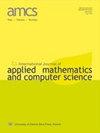在物联网网络中使用双层混合优化器进行特征优化
IF 1.2
4区 计算机科学
Q3 AUTOMATION & CONTROL SYSTEMS
International Journal of Applied Mathematics and Computer Science
Pub Date : 2023-06-01
DOI:10.34768/amcs-2023-0023
引用次数: 0
摘要
物联网(IoT)在智能应用中的应用越来越多,需要对物联网组件进行改进的安全监控。这些组件的安全性使用运行机器学习(ML)算法的入侵检测系统进行监控,以将访问尝试分类为异常或正常。然而,在这种情况下,其中一个问题是在资源受限的智能节点上实现的任何ML或深度学习技术都必须处理的数据特征向量的大长度。本文研究了选择最优特征集的问题,以降低数据维数的损失。提出了一种两层的方法:第一层使用随机森林,第二层使用混合的灰狼优化器(GWO)和粒子群优化器(PSO),以k近邻作为包装方法。在此基础上,对粒子群速度方程的局部最优位置和全局最优位置进行了差分权分布。引入了一种新的度量,即降阶特征与精度比(RFAR),用于比较不同的作品。使用NSLKDD、DS2OS和BoTIoT三个数据集来评估和验证所提出的工作。实验表明,在NSLKDD、DS2OS和BoTIoT数据集上,当最优特征向量长度分别为9、4和8时,准确率分别提高了99.44%、99.44%和99.98%。此外,许多单独的攻击类别的分类也有所改善:NSLKDD的拒绝服务(DoS)(99.75%)和正常(99.52%),ds2o的恶意控制(100%)和DoS(68.69%),以及BoTIoT的盗窃(95.65%)。本文章由计算机程序翻译,如有差异,请以英文原文为准。
Feature Optimization Using a Two–Tier Hybrid Optimizer in an Internet of Things Network
Abstract The growing use of the Internet of Things (IoT) in smart applications necessitates improved security monitoring of IoT components. The security of such components is monitored using intrusion detection systems which run machine learning (ML) algorithms to classify access attempts as anomalous or normal. However, in this case, one of the issues is the large length of the data feature vector that any ML or deep learning technique implemented on resource-constrained intelligent nodes must handle. In this paper, the problem of selecting an optimal-feature set is investigated to reduce the curse of data dimensionality. A two-layered approach is proposed: the first tier makes use of a random forest while the second tier uses a hybrid of gray wolf optimizer (GWO) and the particle swarm optimizer (PSO) with the k-nearest neighbor as the wrapper method. Further, differential weight distribution is made to the local-best and global-best positions in the velocity equation of PSO. A new metric, i.e., the reduced feature to accuracy ratio (RFAR), is introduced for comparing various works. Three data sets, namely, NSLKDD, DS2OS and BoTIoT, are used to evaluate and validate the proposed work. Experiments demonstrate improvements in accuracy up to 99.44%, 99.44% and 99.98% with the length of the optimal-feature vector equal to 9, 4 and 8 for the NSLKDD, DS2OS and BoTIoT data sets, respectively. Furthermore, classification improves for many of the individual classes of attacks: denial-of-service (DoS) (99.75%) and normal (99.52%) for NSLKDD, malicious control (100%) and DoS (68.69%) for DS2OS, and theft (95.65%) for BoTIoT.
求助全文
通过发布文献求助,成功后即可免费获取论文全文。
去求助
来源期刊
CiteScore
4.10
自引率
21.10%
发文量
0
审稿时长
4.2 months
期刊介绍:
The International Journal of Applied Mathematics and Computer Science is a quarterly published in Poland since 1991 by the University of Zielona Góra in partnership with De Gruyter Poland (Sciendo) and Lubuskie Scientific Society, under the auspices of the Committee on Automatic Control and Robotics of the Polish Academy of Sciences.
The journal strives to meet the demand for the presentation of interdisciplinary research in various fields related to control theory, applied mathematics, scientific computing and computer science. In particular, it publishes high quality original research results in the following areas:
-modern control theory and practice-
artificial intelligence methods and their applications-
applied mathematics and mathematical optimisation techniques-
mathematical methods in engineering, computer science, and biology.

 求助内容:
求助内容: 应助结果提醒方式:
应助结果提醒方式:


